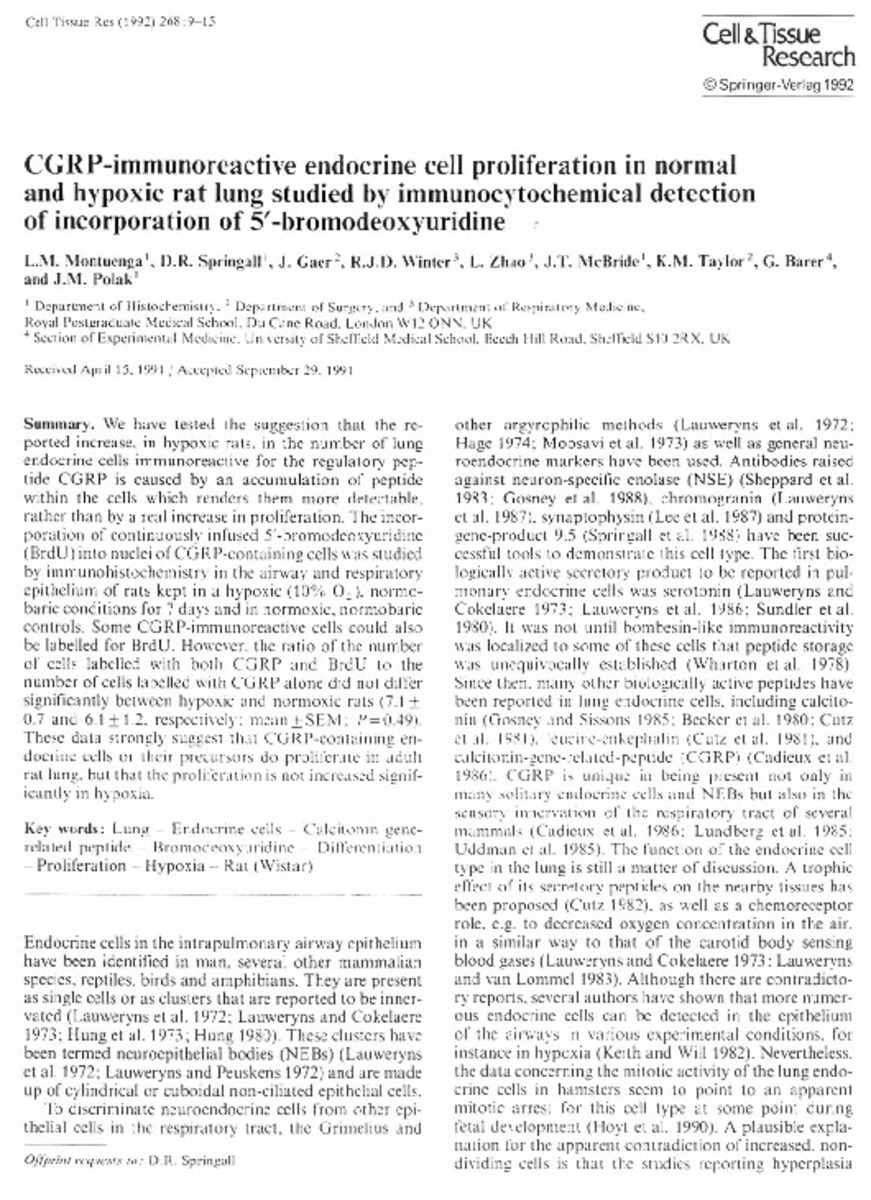CGRP-immunoreactive endocrine cell proliferation in normal and hypoxic rat lung studied by immunocytochemical detection of incorporation of 5'-bromodeoxyuridine
Palabras clave :
Lung
Endocrine cells
Calcitonin generelated peptide
Bromodeoxyuridine
Differentiation
Proliferation
Hypoxia
Rat (Wistar)
Fecha de publicación :
1992
Editorial :
Springer Verlag
Cita:
Montuenga LM, Springall DR, Gaer J, Winter FJ, Zhao L, McBride JT, et al. CGRP-immunoreactive endocrine cell proliferation in normal and hypoxic rat lung studied by immunocytochemical detection of incorporation of 5'-bromodeoxyuridine. Cell Tissue Res 1992 Apr;268(1):9-15.
Aparece en las colecciones:
Estadísticas e impacto
0 citas en

0 citas en

Los ítems de Dadun están protegidos por copyright, con todos los derechos reservados, a menos que se indique lo contrario.










